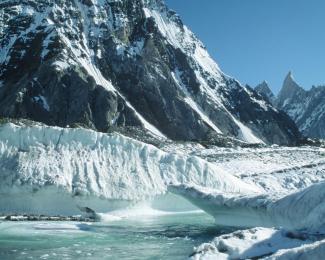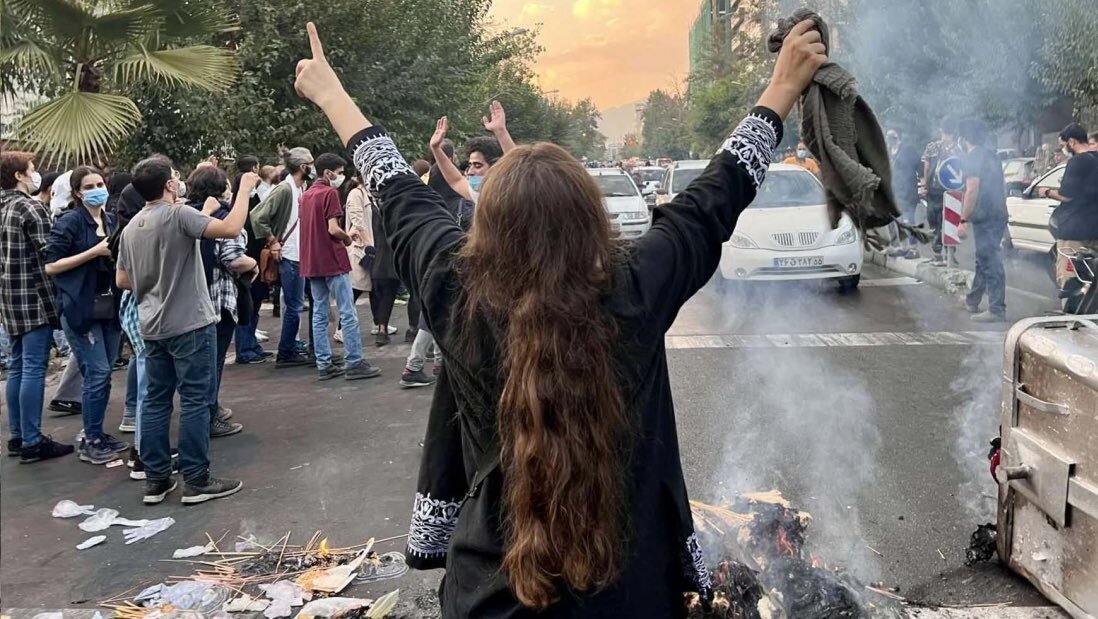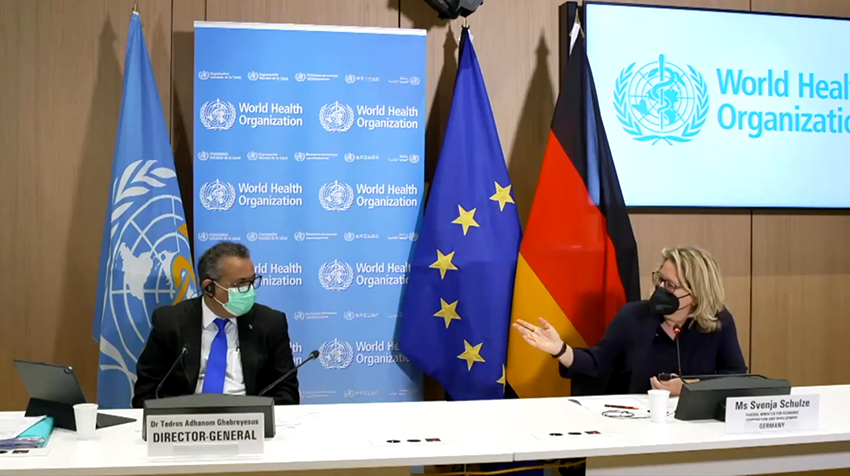Climate crisis
Pakistan’s melting glaciers

More than a century ago, a catastrophe struck Barikan Kot. This mountain village was flooded by a sudden outburst of water from the Hinarchi glacier. The reason was the bursting of an ice wall which had held back a lake of meltwater that had formed on the glacier. About 100 families lost their homes and livelihoods as rocks, earth and debris were swept over the village and its orchards and fertile land.
In the past, this kind of flash flood occurred rarely. That has changed. The Bagrote valley in the Karakoram mountain range in northern Pakistan now suffers several of them every year. Global warming is affecting glaciers all over the world, and the Hindu Kush Himalaya is no exception. Especially in the summer months, melting ice leads to new glacial lakes which, in turn, can cause flash floods.
Aisha Khan of the Civil Society Coalition for Climate Change (CSCCC) – a private organisation working on climate change – warns that glacial lake-outburst floods are becoming ever more likely. “The impacts are catastrophic,” she points out. In recent years, several dozens of people have been killed, and many more families have lost their livelihoods. The local communities tend to be disadvantaged and poor. According to Aisha Khan, the challenge is to tell them in simple language why the environment is changing and what they can do to adapt.
The civil-society activist insists that women in particular must be prepared to respond appropriately. They have a crucial role to play in evacuation, first aid and rescue and relief operations, Aisha Khan says. She wants all risk-management measures to reflect both the social conditions in the village and the scientific insights.
Syed Zahid Hussain Shah agrees that the risks are increasing and must be controlled. He was the field manager of a project run by the government of Pakistan and the Pakistan office of the UN Development Programme (UNDP) that served this purpose from 2011 to 2016. He reports that the Hinarchi glacier is only 16 kilometres long today. It was about 12 % longer 30 years ago, and its ice-shield was higher too.
Pakistan has more than 7,000 glaciers. According to an estimate, there are more than 3,000 glacial lakes, of which 36 are dangerous. Some 7 million people are exposed to the risk of glacial lake-outburst floods, which typically occur in July and August, the warmest months.
The project Zahid worked for took several risk-mitigating initiatives in Bagrote valley. A bridge and protective walls were built. Moreover, streams were excavated and made deeper, so they can carry more water. The project set up four digitised weather stations that automatically relay information pertaining to possible glacial lake outbursts. Thanks to them, it has become possible to warn local communities early on.
The weather stations have helped to save many lives. Hussain Ali, who lives in a mountain village, appreciates them: “Early warning allows people to shift to safer places.” Nonetheless, he says that flash floods have killed more than 20 people in his area in recent years. Moreover, such extreme weather events have killed livestock and destroyed orchards and fields. Several dozen households were therefore forced to move from the mountain villages down into the valley, where it is easier, but nonetheless still quite difficult to eke out a living for people who have lost all assets.
The government of Pakistan and UNDP are now running a follow-up project in the region. It is called the “Scaling-up of GLOF risk reduction in Northern Pakistan (GLOF-II)” project. GLOF stands for glacial lake-outburst flood. The budget for the years 2017 to 2021 is $ 37 million. The project will cover 15 districts and benefit approximately 29 million people.
The mountain regions of Pakistan’s neighbouring countries Afghanistan, India and China face the same kind of risk for the same reasons. Irfan Tariq, a former director general of Pakistan’s Ministry of Climate Change, points out that “the entire Hindu Kush Himalayan mountain range is a very sensitive ecological system”. It is very difficult to control or limit the impacts of climate change on glaciers, he says, so Pakistan’s government is closely monitoring the glaciers.
The big picture
The melting of the glaciers has impacts far beyond the mountain ranges. Glaciers in the Hindu Kush Himalayas feed Asia’s most important rivers, including the Indus, the Ganges, the Brahmaputra, the Mekong and the Yangtse. Hundreds of millions of people depend on these waters. Indeed, Asian civilisations have benefited from the glaciers stabilising water supply throughout the seasons for millennia (see Sheila Mysorekar in the Monitor section of D+C/E+Z e-Paper 2017/09). As the glaciers dwindle, human-built infrastructure will have to serve the functions the glaciers performed naturally in the past.
In this context, dams matter very much. Related infrastructure is vulnerable to glacial lake-outburst floods however. Should a major glacial lake outburst cause a veritable mountain tsunami, the damage may be serious. Syed Mehr Ali Shah from Pakistan’s Ministry of Water Resources says: “We are very much concerned with the bigger glacial lake-outburst flood events, with regards to the safety of our existing hydraulic infrastructures, which include Tarbela dam.” This dam is more than 140 metres high and serves the purposes of hydropower, irrigation and flood control.
There are several major dams in northern Pakistan, and a new one is currently being built. The wall of Diamer Bhasha dam will be more than 250 metres high. The safety of these structures is very important, says Mehr: “We need to protect them from any kind of dam-break phenomenon.” The officer expresses his confidence in the structures being strong enough to withstand typical glacial lake-outburst floods. He says the Diamer Bhasha reservoir has been designed to bear any dam-break wave that occurs due to such flood. At the same time, spillways ensure that excess water can be channelled away.
But even if dams can be built to withstand flash floods, mega dams cause environmental problems in their own right. Experts warn, moreover, that ever more sophisticated and expensive infrastructure will be needed to adapt societies to global warning. If environmental change spins out of control, adaptation will prove impossible for ever more people.
Ultimately, there is no alternative to mitigating climate change. Pakistan, however, only emits about one ton of carbon per head and year, according to Climate Analytics, an independent monitoring initiative. This comparatively small figure means that other countries which emit far more must assume responsibility and assist countries like Pakistan to build their resilience to climate change.
Syed Muhammad Abubakar is an environmental journalist based in Pakistan.
s.m.abubakar@hotmail.com
Twitter: @syedmabubakar














